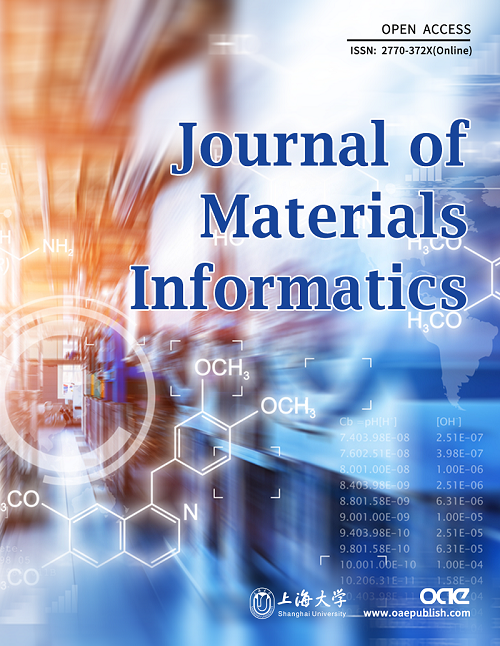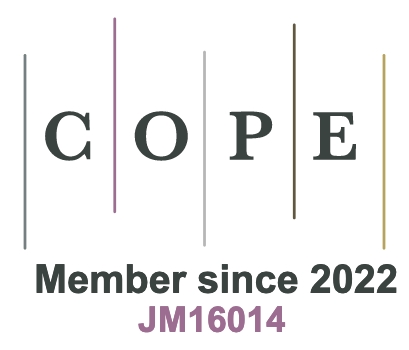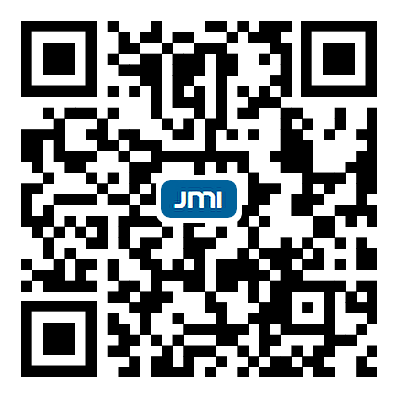REFERENCES
1. Yu W, Zou Y, Wang H, et al. Breaking the bottleneck of lead-free perovskite solar cells through dimensionality modulation. Chem Soc Rev 2024;53:1769-88.
2. Raza H, Imran T, Gao Y, et al. Potential-induced degradation: a challenge in the commercialization of perovskite solar cells. Energy Environ Sci 2024;17:1819-53.
3. Liang Z, Zhang Y, Xu H, et al. Homogenizing out-of-plane cation composition in perovskite solar cells. Nature 2023;624:557-63.
4. Park SM, Wei M, Lempesis N, et al. Low-loss contacts on textured substrates for inverted perovskite solar cells. Nature 2023;624:289-94.
5. Brinkmann KO, Wang P, Lang F, et al. Perovskite-organic tandem solar cells. Nat Rev Mater 2024;9:202-17.
6. Suchan K, Jacobsson TJ, Rehermann C, Unger EL, Kirchartz T, Wolff CM. Rationalizing performance losses of wide bandgap perovskite solar cells evident in data from the Perovskite Database. Adv Energy Mater 2024;14:2303420.
7. Wang YK, Singh K, Li JY, et al. In situ inorganic ligand replenishment enables bandgap stability in mixed-halide perovskite quantum dot solids. Adv Mater 2022;34:e2200854.
8. Yao Y, Cheng C, Zhang C, Hu H, Wang K, De Wolf S. Organic hole-transport layers for efficient, stable, and scalable inverted perovskite solar cells. Adv Mater 2022;34:e2203794.
9. Green MA, Dunlop ED, Yoshita M, et al. Solar cell efficiency tables (version 62). Prog Photovoltaics 2023;31:651-63.
10. Aydin E, Allen TG, De Bastiani M, et al. Pathways toward commercial perovskite/silicon tandem photovoltaics. Science 2024;383:eadh3849.
11. Xie L, Yin L, Liu Y, et al. Interface engineering for efficient raindrop solar cell. ACS Nano 2022;16:5292-302.
12. Grandhi GK, Hardy D, Krishnaiah M, et al. Wide-bandgap perovskite-inspired materials: defect-driven challenges for high-performance optoelectronics. Adv Funct Mater 2023:2307441.
13. Feng HJ, Paudel TR, Tsymbal EY, Zeng XC. Tunable optical properties and charge separation in CH3NH3SnxPb1-xI3/TiO2-based planar perovskites cells. J Am Chem Soc 2015;137:8227-36.
14. Liu Z, Krückemeier L, Krogmeier B, et al. Open-circuit voltages exceeding 1.26 V in planar methylammonium lead iodide perovskite solar cells. ACS Energy Lett 2019;4:110-7.
15. Brinkmann KO, Becker T, Zimmermann F, et al. Perovskite-organic tandem solar cells with indium oxide interconnect. Nature 2022;604:280-6.
16. Jiang Q, Tong J, Xian Y, et al. Surface reaction for efficient and stable inverted perovskite solar cells. Nature 2022;611:278-83.
17. Lin R, Xu J, Wei M, et al. All-perovskite tandem solar cells with improved grain surface passivation. Nature 2022;603:73-8.
18. Chen W, Zhu Y, Xiu J, et al. Monolithic perovskite/organic tandem solar cells with 23.6% efficiency enabled by reduced voltage losses and optimized interconnecting layer. Nat Energy 2022;7:229-37.
19. Li L, Wang Y, Wang X, et al. Flexible all-perovskite tandem solar cells approaching 25% efficiency with molecule-bridged hole-selective contact. Nat Energy 2022;7:708-17.
20. Datta K, Caiazzo A, Hope MA, et al. Light-induced halide segregation in 2D and quasi-2D mixed-halide perovskites. ACS Energy Lett 2023;8:1662-70.
21. Zhang J, Duan J, Guo Q, et al. A universal grain “cage” to suppress halide segregation of mixed-halide inorganic perovskite solar cells. ACS Energy Lett 2022;7:3467-75.
22. Wen J, Zhao Y, Liu Z, et al. Steric engineering enables efficient and photostable wide-bandgap perovskites for all-perovskite tandem solar cells. Adv Mater 2022;34:e2110356.
23. Yang G, Ni Z, Yu ZJ, et al. Defect engineering in wide-bandgap perovskites for efficient perovskite-silicon tandem solar cells. Nat Photon 2022;16:588-94.
24. Wang C, Shao W, Liang J, et al. Suppressing phase segregation in wide bandgap perovskites for monolithic perovskite/organic tandem solar cells with reduced voltage loss. Small 2022;18:e2204081.
25. Wright AD, Patel JB, Johnston MB, Herz LM. Temperature-dependent reversal of phase segregation in mixed-halide perovskites. Adv Mater 2023;35:e2210834.
26. Shirzadi E, Tappy N, Ansari F, Nazeeruddin MK, Hagfeldt A, Dyson PJ. Deconvolution of light-induced ion migration phenomena by statistical analysis of cathodoluminescence in lead halide-based perovskites. Adv Sci 2022;9:e2103729.
27. Wang Z, Zeng L, Zhu T, et al. Suppressed phase segregation for triple-junction perovskite solar cells. Nature 2023;618:74-9.
28. Cai R, Bektas H, Wang X, et al. Accelerated perovskite oxide development for thermochemical energy storage by a high-throughput combinatorial approach. Adv Energy Mater 2023;13:2203833.
29. Sabino FP, Dalpian GM, Zunger A. Light-induced frenkel defect pair formation can lead to phase-segregation of otherwise miscible halide perovskite alloys. Adv Energy Mater 2023;13:2301539.
30. Shin Y, Galli G. Tunable ferroelectricity in oxygen-deficient perovskites with Grenier structure. npj Comput Mater 2023;9:218.
31. Barker AJ, Sadhanala A, Deschler F, et al. Defect-assisted photoinduced halide segregation in mixed-halide perovskite thin films. ACS Energy Lett 2017;2:1416-24.
32. Mao W, Hall CR, Bernardi S, et al. Light-induced reversal of ion segregation in mixed-halide perovskites. Nat Mater 2021;20:55-61.
33. Brennan MC, Ruth A, Kamat PV, Kuno M. Photoinduced anion segregation in mixed halide perovskites. Trends Chem 2020;2:282-301.
34. Chen Z, Brocks G, Tao S, Bobbert PA. Unified theory for light-induced halide segregation in mixed halide perovskites. Nat Commun 2021;12:2687.
35. Bechtel JS, Van der Ven A. First-principles thermodynamics study of phase stability in inorganic halide perovskite solid solutions. Phys Rev Mater 2018;2:045401.
36. Frohna K, Anaya M, Macpherson S, et al. Nanoscale chemical heterogeneity dominates the optoelectronic response of alloyed perovskite solar cells. Nat Nanotechnol 2022;17:190-6.
37. Ghasemi M, Zhang Y, Zhou C, et al. Controllable acceleration and deceleration of charge carrier transport in metal-halide perovskite single-crystal by Cs-cation induced bandgap engineering. Small 2022;18:e2107680.
38. Mussakhanuly N, Soufiani AM, Bernardi S, et al. Thermal disorder-induced strain and carrier localization activate reverse halide segregation. Adv Mater 2024;36:e2311458.
39. Zhu C, Niu X, Fu Y, et al. Strain engineering in perovskite solar cells and its impacts on carrier dynamics. Nat Commun 2019;10:815.
40. Yang F. Effects of size mismatch of halide ions on the phase stability of mixed halide perovskites. Phys Scr 2024;99:025937.
41. Slotcavage DJ, Karunadasa HI, Mcgehee MD. Light-induced phase segregation in halide-perovskite absorbers. ACS Energy Lett 2016;1:1199-205.
42. Wang P, Wu Y, Cai B, Ma Q, Zheng X, Zhang W. Solution-processable perovskite solar cells toward commercialization: progress and challenges. Adv Funct Mater 2019;29:1807661.
43. Li N, Luo Y, Chen Z, et al. Microscopic degradation in formamidinium-cesium lead iodide perovskite solar cells under operational stressors. Joule 2020;4:1743-58.
44. Gautam SK, Kim M, Miquita DR, Bourée J, Geffroy B, Plantevin O. Reversible photoinduced phase segregation and origin of long carrier lifetime in mixed-halide perovskite films. Adv Funct Mater 2020;30:2002622.
45. Das B, Aguilera I, Rau U, Kirchartz T. Effect of doping, photodoping, and bandgap variation on the performance of perovskite solar cells. Adv Opt Mater 2022;10:2101947.
46. Wang T, Li R, Ardekani H, et al. Sustainable materials acceleration platform reveals stable and efficient wide-bandgap metal halide perovskite alloys. Matter 2023;6:2963-86.
47. Mannodi-kanakkithodi A, Chan MKY. Data-driven design of novel halide perovskite alloys. Energy Environ Sci 2022;15:1930-49.
48. Al-qaisi S, Ali MA, Alrebdi TA, et al. First-principles investigations of Ba2NaIO6 double perovskite semiconductor: material for low-cost energy technologies. Mater Chem Phys 2022;275:125237.
49. Liu Y, Tan X, Liang J, Han H, Xiang P, Yan W. Machine learning for perovskite solar cells and component materials: key technologies and prospects. Adv Funct Mater 2023;33:2214271.
50. Li C, Zheng K. Methods, progresses, and opportunities of materials informatics. InfoMat 2023;5:e12425.
51. Zhao Y, Heumueller T, Zhang J, et al. A bilayer conducting polymer structure for planar perovskite solar cells with over 1,400 hours operational stability at elevated temperatures. Nat Energy 2022;7:144-52.
52. Zhao H, Chen W, Huang H, et al. A robotic platform for the synthesis of colloidal nanocrystals. Nat Synth 2023;2:505-14.
53. Liu S, Chen Z, Liu Y, et al. Data-driven controlled synthesis of oriented quasi-spherical CsPbBr3 perovskite materials. Angew Chem Int Ed Engl 2024;63:e202319480.
54. Wu L, Chen Z, Yuan Z, et al. Data-driven fine element tuning of halide double perovskite for enhanced photoluminescence. Adv Opt Mater 2024;12:2301245.
55. Wang Z, Sun Z, Yin H, et al. Data-driven materials innovation and applications. Adv Mater 2022;34:e2104113.
56. Wang Z, Yang M, Xie X, et al. Applications of machine learning in perovskite materials. Adv Compos Hybrid Mater 2022;5:2700-20.
57. Liu Y, Yan W, Han S, et al. How machine learning predicts and explains the performance of perovskite solar cells. Solar RRL 2022;6:2101100.
58. Hu Y, Hu X, Zhang L, et al. Machine-learning modeling for ultra-stable high-efficiency perovskite solar cells. Adv Energy Mater 2022;12:2201463.
59. Priyanga GS, Mattur MN, Nagappan N, Rath S, Thomas T. Prediction of nature of band gap of perovskite oxides (ABO3) using a machine learning approach. J Materiomics 2022;8:937-48.
60. Chen C, Ye W, Zuo Y, Zheng C, Ong SP. Graph networks as a universal machine learning framework for molecules and crystals. Chem Mater 2019;31:3564-72.
61. Chen C, Ong SP. AtomSets as a hierarchical transfer learning framework for small and large materials datasets. npj Comput Mater 2021;7:173.
62. Jacobsson TJ, Hultqvist A, García-fernández A, et al. An open-access database and analysis tool for perovskite solar cells based on the FAIR data principles. Nat Energy 2022;7:107-15.
63. Liu Y, Yan W, Zhu H, Tu Y, Guan L, Tan X. Study on bandgap predications of ABX3-type perovskites by machine learning. Org Electron 2022;101:106426.
64. Yang C, Chong X, Hu M, et al. Accelerating the discovery of hybrid perovskites with targeted band gaps via interpretable machine learning. ACS Appl Mater Interfaces 2023;15:40419-27.
65. Ong SP, Richards WD, Jain A, et al. Python materials genomics (pymatgen): a robust, open-source python library for materials analysis. Comp Mater Sci 2013;68:314-9.
66. Chen C, Zuo Y, Ye W, Li X, Ong SP. Learning properties of ordered and disordered materials from multi-fidelity data. Nat Comput Sci 2021;1:46-53.
67. Coley CW, Barzilay R, Green WH, Jaakkola TS, Jensen KF. Convolutional embedding of attributed molecular graphs for physical property prediction. J Chem Inf Model 2017;57:1757-72.
68. Wang J, Xu P, Ji X, Li M, Lu W. Feature selection in machine learning for perovskite materials design and discovery. Materials 2023;16:3134.
69. Chen C, Ong SP. A universal graph deep learning interatomic potential for the periodic table. Nat Comput Sci 2022;2:718-28.
70. Deng B, Zhong P, Jun K, et al. CHGNet as a pretrained universal neural network potential for charge-informed atomistic modelling. Nat Mach Intell 2023;5:1031-41.
71. Jain A, Ong SP, Hautier G, et al. Commentary: the materials project: a materials genome approach to accelerating materials innovation. APL Materials 2013;1:011002.
72. Sher A, van Schilfgaarde M, Chen AB, Chen W. Quasichemical approximation in binary alloys. Phys Rev B Condens Matter 1987;36:4279-95.
73. Phan AT, Paek M, Kang Y. Phase equilibria and thermodynamics of the Fe–Al–C system: critical evaluation, experiment and thermodynamic optimization. Acta Mater 2014;79:1-15.
74. Wasiur-rahman S, Medraj M. Critical assessment and thermodynamic modeling of the binary Mg–Zn, Ca–Zn and ternary Mg–Ca–Zn systems. Intermetallics 2009;17:847-64.
75. Zhu T, Teale S, Grater L, et al. Coupling photogeneration with thermodynamic modeling of light-induced alloy segregation enables the discovery of stabilizing dopants. arXiv. [Preprint.] Jan 30, 2023. [accessed on 22 May 2024]. Available from: https://doi.org/10.48550/arXiv.2301.12627.
76. Abedi S, Tarighi Ahmadpour M, Baninajarian S, et al. Statistical analysis of the performance of a variety of first-principles schemes for accurate prediction of binary semiconductor band gaps. J Chem Phys 2023;158:184109.
77. Ramadan AJ, Oliver RDJ, Johnston MB, Snaith HJ. Methylammonium-free wide-bandgap metal halide perovskites for tandem photovoltaics. Nat Rev Mater 2023;8:822-38.
78. Peng S, Wang Y, Braun M, et al. Kinetics and mechanism of light-induced phase separation in a mixed-halide perovskite. Matter 2023;6:2052-65.
79. Wu P, Thrithamarassery Gangadharan D, Saidaminov MI, Tan H. A Roadmap for efficient and stable all-perovskite tandem solar cells from a chemistry perspective. ACS Cent Sci 2023;9:14-26.
80. Eperon GE, Stranks SD, Menelaou C, Johnston MB, Herz LM, Snaith HJ. Formamidinium lead trihalide: a broadly tunable perovskite for efficient planar heterojunction solar cells. Energy Environ Sci 2014;7:982.
81. Brivio F, Walker AB, Walsh A. Structural and electronic properties of hybrid perovskites for high-efficiency thin-film photovoltaics from first-principles. APL Mater 2013;1:042111.
82. Noh JH, Im SH, Heo JH, Mandal TN, Seok SI. Chemical management for colorful, efficient, and stable inorganic-organic hybrid nanostructured solar cells. Nano Lett 2013;13:1764-9.
83. Tao S, Schmidt I, Brocks G, et al. Absolute energy level positions in tin- and lead-based halide perovskites. Nat Commun 2019;10:2560.
84. Butler KT, Frost JM, Walsh A. Band alignment of the hybrid halide perovskites CH3NH3PbCl3, CH3NH3PbBr3 and CH3NH3PbI3. Mater Horiz 2015;2:228-31.
85. Lu X, Zhao Z, Li K, et al. First-principles insight into the photoelectronic properties of Ge-based perovskites. RSC Adv 2016;6:86976-81.
86. Braly IL, Stoddard RJ, Rajagopal A, et al. Current-induced phase segregation in mixed halide hybrid perovskites and its impact on two-terminal tandem solar cell design. ACS Energy Lett 2017;2:1841-7.
87. Dong X, Chao L, Niu T, et al. Phase-pure engineering for efficient and stable formamidinium-based perovskite solar cells. Solar RRL 2022;6:2200060.
88. Otero-Martínez C, Imran M, Schrenker NJ, et al. Fast A-site cation cross-exchange at room temperature: single-to double- and triple-cation halide perovskite nanocrystals. Angew Chem Int Ed Engl 2022;61:e202205617.
89. Boldyreva AG, Zhidkov IS, Tsarev S, et al. Unraveling the impact of hole transport materials on photostability of perovskite films and p-i-n solar cells. ACS Appl Mater Interfaces 2020;12:19161-73.
90. Xie LQ, Chen L, Nan ZA, et al. Understanding the cubic phase stabilization and crystallization kinetics in mixed cations and halides perovskite single crystals. J Am Chem Soc 2017;139:3320-3.
91. Zhong Y, Yang J, Wang X, et al. Inhibition of ion migration for highly efficient and stable perovskite solar cells. Adv Mater 2023;35:e2302552.
92. Mathew P, Cho J, Kamat PV. Ramifications of ion migration in 2D lead halide perovskites. ACS Energy Lett 2024;9:1103-14.
93. Zhang L, Wang S, Jiang Y, Yuan M. Stable and efficient mixed-halide perovskite LEDs. ChemSusChem 2024;17:e202301205.
94. Sun H, Liu S, Liu X, et al. Suppressed phase segregation with small A-site and large X-site incorporation for photostable wide-bandgap perovskite solar cells. Small Methods 2024;17:e2400067.
95. Wang C, Qu D, Zhou B, et al. Self-healing behavior of the metal halide perovskites and photovoltaics. Small 2024;20:e2307645.
96. Wang K, Yao Q, Zhang J, et al. Short-range migration of A-site cations inhibit photoinduced phase segregation in
97. Cho J, Kamat PV. Photoinduced phase segregation in mixed halide perovskites: thermodynamic and kinetic aspects of Cl–Br segregation. Adv Opt Mater 2021;9:2001440.
98. Knight AJ, Herz LM. Preventing phase segregation in mixed-halide perovskites: a perspective. Energy Environ Sci 2020;13:2024-46.
99. Chen S, Hou Y, Chen H, et al. Exploring the stability of novel wide bandgap perovskites by a robot based high throughput approach. Adva Energy Mater 2018;8:1701543.








